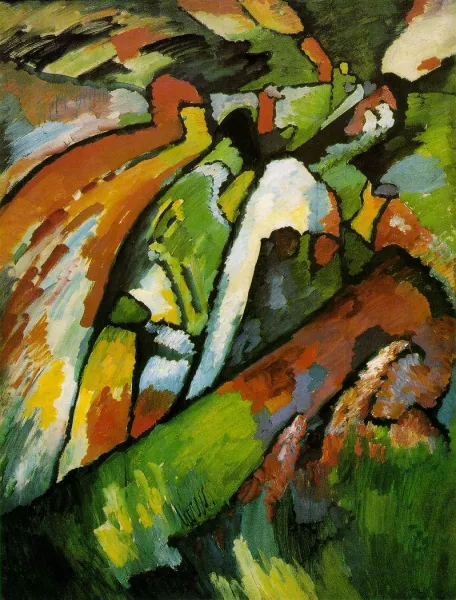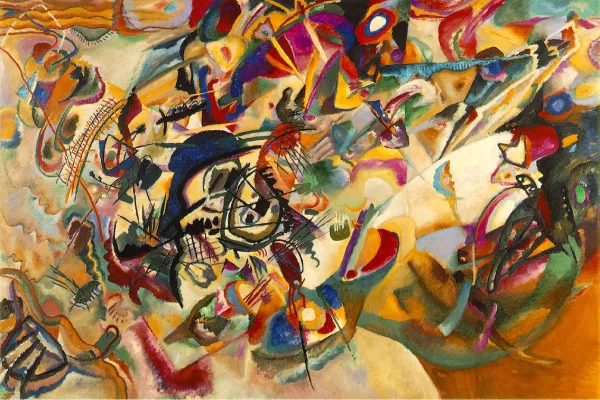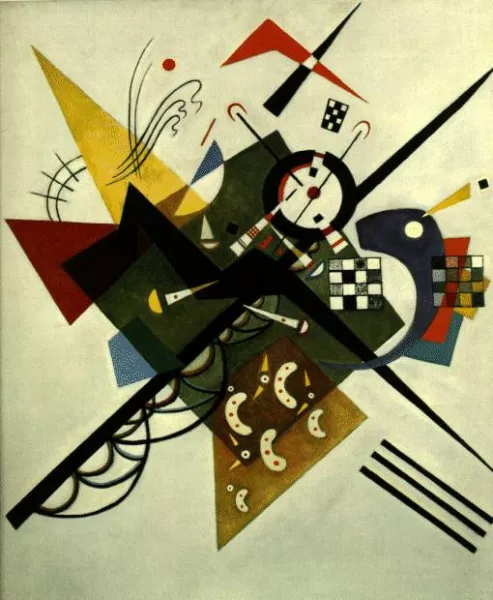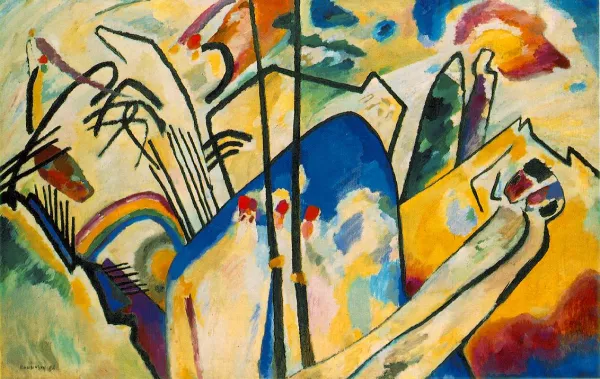Wassily Kandinsky Biography
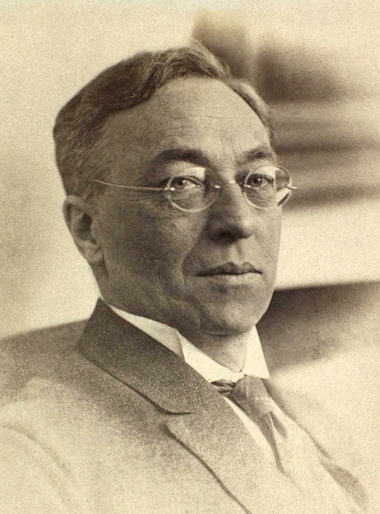
Wassily Wassilyevich Kandinsky was a revolutionary artist credited as one of the founders and leading figures of abstract art. His bold innovations and theories on the spiritual and synesthetic properties of color and form had a profound and lasting impact on the development of 20th century modern art.
Kandinsky's Early Life and Artistic Beginnings
Wassily Kandinsky was born in Moscow, Russia, on December 4, 1866, to an upper-class family. His father, Vasily Silvestrovich Kandinsky, was a tea merchant, and his mother, Lidia Ticheeva, was a homemaker. Kandinsky's parents divorced when he was about five years old, and he moved to Odessa to live with his aunt, where he received a classical education, learning to play the piano and cello.
Despite his early interest in art, Kandinsky initially followed a more traditional path. He studied law and economics at the University of Moscow, graduating with honors in 1892. He then took up a teaching position at the Moscow Faculty of Law, managing an art-printing works on the side. However, a pivotal moment in his life occurred in 1896 when he attended an exhibition of French Impressionists in Moscow. The experience of seeing Claude Monet's "Haystacks" series profoundly impacted Kandinsky, as it was his first encounter with non-representational art.
Another significant event that influenced Kandinsky's decision to pursue art was his attendance at a performance of Wagner's opera "Lohengrin" at the Bolshoi Theatre. The synthesis of music and visual imagery in the opera left a lasting impression on him. These experiences, combined with his growing dissatisfaction with his legal career, led Kandinsky to make a bold decision. At the age of 30, he left his promising career in law and moved to Munich, Germany, to study art.
Kandinsky's early artistic works were heavily influenced by Russian folk art and the spiritual aspects of his upbringing. He was fascinated by the expressive potential of color and believed that art could serve as a bridge between the material and spiritual worlds. In his early paintings, such as "The Blue Rider" (1903) and "Couple Riding" (1906-1907), Kandinsky began to experiment with color and form, gradually moving away from representational art and towards abstraction.
During his time in Munich, Kandinsky immersed himself in the study of art, attending the prestigious private painting school of Anton Ažbe and later enrolling at the Munich Academy of Arts. He also formed friendships with other avant-garde artists, such as Paul Klee and Franz Marc, with whom he would later establish the influential art group Der Blaue Reiter (The Blue Rider).
As Kandinsky continued to develop his artistic style, he drew inspiration from various sources, including the vibrant colors of Russian folk art, the spiritual teachings of theosophy, and the music of composers like Wagner and Schoenberg. These influences, combined with his own inner journey of self-discovery, laid the foundation for his groundbreaking contributions to the development of abstract art in the early 20th century.
The Evolution of Kandinsky's Style
Wassily Kandinsky's artistic journey was marked by a gradual shift from representational art to pure abstraction. His early works, such as "Couple Riding" (1906-1907) and "Houses in Munich" (1908), still contained recognizable elements of landscapes and figures, albeit with a strong emphasis on color and form. These early paintings were influenced by the vibrant hues of Russian folk art and the expressive brushwork of Post-Impressionism.
As Kandinsky's style evolved, he began to move further away from representation and towards a more abstract language of color and form. The impact of Fauvism and Expressionism can be seen in works like Improvisation 7 (1910) and Composition IV (1911), where the subject matter becomes increasingly fragmented and the colors more intense and emotive. Kandinsky believed that colors had a direct correspondence to emotions and musical tones, and he sought to create compositions that would evoke a synesthetic experience in the viewer.
Improvisation 7 (1910), Oil
Dimensions: 131 x 97 cm (51.18 x 38.19 inches)
Several key works demonstrate Kandinsky's progression towards pure abstraction. Impression III (Concert) (1911) marks a significant step in this direction, with its highly simplified forms and emphasis on the interplay of colors. The painting was inspired by a concert of Arnold Schoenberg's atonal music, which Kandinsky felt was a perfect analogue to his own efforts to free painting from the constraints of representation.
Impression III (Concert)
Another amazing work in Kandinsky's evolution is Composition VII (1913), which represents a complete break from representational art. The painting is a dynamic, swirling mass of colors and shapes that seem to move and pulsate with a life of their own. Kandinsky described the work as a "spontaneous expression of inner character, nonmaterial in nature, and it remains one of the most iconic examples of his mature abstract style.
Composition VII
In the years following World War I, Kandinsky's abstractions became more geometric and structured, reflecting the influence of Constructivism and the Bauhaus aesthetic. Works like On White II (1923) and Composition VIII (1923) feature sharply defined shapes and a more limited color palette, yet still retain the sense of dynamic movement and spiritual resonance that characterizes Kandinsky's best work.
Composition VII (1910), Oil
Dimensions: 200 cm × 302 cm (79.0 in × 119.0 inches)
On White II
Throughout his career, Kandinsky continued to refine his abstract language, always seeking to express the "inner necessity" of the artist and to create works that would resonate with the deepest levels of human emotion. His legacy as a pioneer of abstraction is secure, and his innovations continue to inspire artists and art lovers around the world.
On White II (1923), Oil
Dimensions: 105 x 98 cm (41.3 x 38.6 inches)
Composition IV, 1911
Throughout his career, Kandinsky sought to create a new language of abstract art that could express the ineffable and the spiritual. He believed that by moving beyond representation and embracing pure color and form, artists could create works that spoke directly to the soul and awakened a sense of spiritual yearning in the viewer. In Concerning the Spiritual in Art, he wrote, "The artist must train not only his eye but also his soul."
Composition IV (1923), Oil
Dimensions: 159.5 x 250.5 cm (62.8 × 98.6″ inches)
Kandinsky's theories had a profound impact on the development of abstract art in the 20th century. His emphasis on the spiritual dimension of art, the expressive power of color and form, and the importance of the artist's inner life helped to shape the course of modern art and inspired generations of artists to explore new forms of creative expression. Today, "Concerning the Spiritual in Art" remains a seminal text in the history of art theory, a testament to Kandinsky's enduring vision of art as a gateway to the spiritual realm.
Kandinsky's Theories on Art and Spirituality
Wassily Kandinsky's seminal treatise Concerning the Spiritual in Art, published in 1910, laid the foundation for his pioneering approach to abstract art. In this influential work, Kandinsky explored the deep connection between art and spirituality, arguing that the true purpose of art was to express the artist's inner, spiritual life and to evoke a corresponding response in the viewer.
Kandinsky believed that every work of art contained a "whole lifetime imprisoned, a whole lifetime of fears, doubts, hopes, and joys." He saw art as a means of harmonizing and purifying the emotions, writing that "the Stimmung [mood or atmosphere] of a picture can deepen and purify that of the spectator." For Kandinsky, art was not merely a matter of technique or skill, but a spiritual necessity that could nourish the soul and guide humanity towards a higher state of consciousness.
Central to Kandinsky's theory was the concept of inner necessity, which he described as the driving force behind the artist's creative impulse. This inner necessity, born of the artist's spiritual life, compelled them to create works that expressed their deepest emotions and experiences. Kandinsky believed that by tapping into this inner necessity, artists could create works that transcended the material world and touched the eternal, spiritual realm.
Kandinsky also placed great emphasis on the emotional and spiritual power of color and form. He believed that each color possessed its own unique resonance and could evoke specific emotions and spiritual states in the viewer. In Concerning the Spiritual in Art, he wrote, "Color is a power which directly influences the soul." Similarly, he saw form as a means of expressing the artist's inner life, with different shapes and lines corresponding to different emotional and spiritual states.
The Bauhaus Years and Kandinsky's Teaching Period
Wassily Kandinsky's role as a teacher at the Bauhaus school in Germany from 1922 to 1933 had a profound impact on the development of abstract art and the school's curriculum. The Bauhaus, founded by Walter Gropius in 1919, was a revolutionary school that sought to unify art, craft, and technology, and to create a new approach to art education.
Kandinsky was appointed as a professor at the Bauhaus in 1922, where he taught the Basic Design course and the Advanced Theory of Design. His teaching philosophy was based on the idea that art should be a spiritual experience, and that the artist's role was to express their inner emotions through color and form. Kandinsky believed that the study of color and form was essential to the development of abstract art, and he encouraged his students to experiment with these elements in their work.
One of Kandinsky's most significant contributions to the Bauhaus curriculum was his book Point and Line to Plane, published in 1926. In this book, Kandinsky explored the relationship between geometric shapes and their emotional impact on the viewer. He argued that the circle was the most peaceful shape, representing the human soul, while the square represented the material world. These ideas had a profound influence on the development of abstract art and design at the Bauhaus and beyond.
Kandinsky's teaching methods were highly influential, and he attracted a number of notable students and collaborators during his time at the Bauhaus. These included Paul Klee, who shared Kandinsky's interest in color theory and spirituality, and László Moholy-Nagy, who went on to become a leading figure in the Bauhaus movement. Other students who were inspired by Kandinsky's teachings included Josef Albers, who later became a prominent abstract artist and color theorist, and Herbert Bayer, who became a pioneering graphic designer.
Despite the challenges posed by the rise of Nazism in Germany, Kandinsky remained committed to his teaching at the Bauhaus until the school was forced to close in 1933. He then emigrated to France, where he continued to develop his abstract style and to explore the spiritual dimensions of art until his death in 1944.
Today, Kandinsky's legacy as a teacher and theorist continues to inspire artists and designers around the world. His ideas about the emotional and spiritual power of color and form, and his commitment to the idea of art as a means of inner expression, remain as relevant and influential as ever. Through his teaching at the Bauhaus and his groundbreaking theoretical work, Kandinsky helped to lay the foundation for the development of abstract art in the 20th century and beyond.
Kandinsky's Impact on the Art World
Wassily Kandinsky's groundbreaking work and theories had a profound impact on the art world, both during his lifetime and in the decades following his death. While his early abstract paintings were met with controversy and skepticism by some critics and members of the public, Kandinsky's persistent exploration of non-representational art eventually helped to establish abstraction as a legitimate and influential artistic movement.
During his years at the Bauhaus, Kandinsky's ideas about the spiritual nature of art and the expressive power of color and form influenced a generation of young artists and designers. His teachings and writings, particularly "Concerning the Spiritual in Art" and Point and Line to Plane, became foundational texts for the development of abstract art in the 20th century.
Kandinsky's work and theories had a significant impact on subsequent art movements, particularly Abstract Expressionism and Color Field painting. American artists such as Jackson Pollock, Mark Rothko, and Barnett Newman were deeply influenced by Kandinsky's emphasis on the emotional and spiritual dimensions of art, as well as his use of large-scale canvases and expressive brushwork.
In the years following World War II, Kandinsky's reputation as a pioneer of abstraction continued to grow, and his work was celebrated in major exhibitions and retrospectives around the world. Today, he is widely regarded as one of the most important and influential artists of the 20th century, and his theories on the spiritual nature of art continue to resonate with contemporary artists and scholars.
Kandinsky's lasting legacy lies not only in his groundbreaking paintings and theories but also in his unwavering commitment to the idea of art as a means of spiritual expression and transformation. He believed that art had the power to transcend the material world and to connect us with higher truths and experiences, and his work continues to inspire and challenge viewers to this day.
As the art world continues to evolve and change, Kandinsky's ideas about the expressive power of color and form, the importance of inner necessity, and the spiritual dimensions of art remain as relevant and vital as ever. His legacy as a pioneering abstract artist and theorist has secured his place in the pantheon of modern art, and his influence can be seen in the work of countless artists who have followed in his footsteps.
Analyzing Kandinsky's Most Famous Works
Wassily Kandinsky's groundbreaking abstract paintings are among the most iconic and influential works of modern art. By examining some of his most famous compositions, we can gain a deeper understanding of his unique artistic vision and the symbolism behind his use of color, form, and composition.
One of Kandinsky's most celebrated works is Composition VII, painted in 1913. This large-scale oil painting is a dynamic, swirling mass of colors and shapes that seem to move and pulsate with a life of their own. Kandinsky described the work as a "spontaneous expression of inner character, nonmaterial in nature, and it remains one of the most iconic examples of his mature abstract style.
In Composition VII, Kandinsky uses a complex arrangement of geometric shapes, lines, and colors to create a sense of movement and energy. The painting is dominated by a central vortex of swirling forms, which seems to draw the viewer's eye into the heart of the composition. Around this central motif, Kandinsky arranges a series of smaller, more distinct shapes and lines, which create a sense of rhythm and balance.
Kandinsky's use of color in "Composition VII" is also highly symbolic. He believed that each color possessed its own unique resonance and could evoke specific emotions and spiritual states in the viewer. In this painting, he uses a range of bright, primary colors, such as red, blue, and yellow, as well as more muted tones like green and purple. These colors are arranged in a way that creates a sense of harmony and balance, while also evoking a range of emotions and associations.
Another famous Kandinsky work is Improvisation 28, painted in 1912. This painting is an explosion of color and form, with jagged lines and irregular shapes that seem to dance across the canvas. Like Composition VII, Improvisation 28 is a purely abstract work, with no recognizable objects or figures.
In Improvisation 28, Kandinsky uses a more spontaneous, intuitive approach to composition, allowing the forms and colors to emerge organically from his subconscious mind. The painting is characterized by a sense of movement and dynamism, with shapes and lines that seem to collide and intersect in unexpected ways.
Kandinsky's use of color in "Improvisation 28" is also highly expressive and symbolic. He uses a range of bright, bold colors, such as red, blue, and yellow, as well as more subtle shades of pink, green, and purple. These colors are arranged in a way that creates a sense of depth and space, with some shapes appearing to recede into the background while others seem to float on the surface of the canvas.
To fully appreciate the complexity and beauty of Kandinsky's abstract compositions, it is helpful to view high-resolution images of his paintings with zoom functionality and detailed descriptions. By examining the intricate details of his brushwork, the layering of colors, and the interplay of forms, we can gain a deeper understanding of his artistic process and the meaning behind his work.
Interactive elements, such as the ability to zoom in on specific areas of the painting or to view the work from different angles, can also enhance our appreciation of Kandinsky's art. By exploring his paintings in a more immersive and interactive way, we can better understand the depth and complexity of his vision, and the ways in which his abstract compositions continue to inspire and challenge viewers to this day.
Kandinsky's Influence on Other Art Forms
Wassily Kandinsky's pioneering work in abstract art had a profound influence that extended far beyond the realm of painting. His theories on the spiritual nature of art and the expressive power of color, form, and composition resonated across various artistic disciplines, inspiring new forms of creative expression.
One area where Kandinsky's impact was particularly significant was in the world of music. His belief in the synesthetic relationship between visual art and music led him to explore ways of translating musical concepts into his paintings. Kandinsky's works, with their dynamic compositions and evocative use of color, were often inspired by the rhythms, melodies, and harmonies of musical compositions.
This connection between art and music was not merely theoretical for Kandinsky. He actively collaborated with composers, most notably Arnold Schoenberg, whose atonal and expressionist musical works had a profound influence on Kandinsky's artistic development. Kandinsky's painting Impression III (Concert) (1911) was directly inspired by a performance of Schoenberg's atonal compositions, capturing the artist's attempt to translate the dissonant and emotionally charged qualities of the music into a visual form.
Kandinsky's theories and artistic approach also had a significant impact on the world of literature and performance art. Writers and poets were drawn to his ideas about the spiritual dimensions of art and the ability of abstract forms to evoke emotional and metaphysical experiences. Kandinsky's emphasis on the expressive power of color and form resonated with avant-garde movements in literature and theater, inspiring new forms of experimental and multidisciplinary artistic expression.
In the realm of design and visual culture, Kandinsky's legacy can be seen in the widespread adoption of abstract and non-representational forms in everything from graphic design and typography to architecture and product design. His exploration of the interplay between color, shape, and line has influenced generations of designers, who have embraced the expressive and symbolic potential of abstract visual elements.
Kandinsky's influence can also be traced in the development of various art movements and styles, such as Abstract Expressionism, Color Field painting, and Op Art. Artists like Jackson Pollock, Mark Rothko, and Victor Vasarely were inspired by Kandinsky's pioneering work in abstraction and his emphasis on the emotional and spiritual dimensions of art.
Today, Kandinsky's impact continues to be felt across a wide range of artistic disciplines. His theories and artistic vision have become an integral part of the canon of modern art, inspiring artists, designers, and creative thinkers to explore new forms of expression and to push the boundaries of what art can achieve. Whether through the synesthetic fusion of visual and auditory elements, the exploration of color and form as vehicles for emotional and spiritual expression, or the embrace of abstraction as a means of transcending the material world, Kandinsky's legacy endures as a testament to the transformative power of art.
Kandinsky's Relevance Today
Wassily Kandinsky's groundbreaking work in abstract art continues to captivate and inspire art enthusiasts, scholars, and contemporary artists around the world. Despite the passage of time since his death in 1944, Kandinsky's paintings and theories remain remarkably relevant, testifying to the enduring power and appeal of his artistic vision.
One of the most striking aspects of Kandinsky's ongoing relevance is the continued presence of his work in major museums and exhibitions worldwide. From the Solomon R. Guggenheim Museum in New York, which holds the largest collection of Kandinsky's works, to the Centre Pompidou in Paris and the Lenbachhaus in Munich, Kandinsky's paintings are prominently featured in the permanent collections of many prestigious institutions. This sustained exposure to his art ensures that new generations of viewers have the opportunity to experience the beauty, complexity, and emotional resonance of his compositions firsthand.
Moreover, Kandinsky's influence can be seen in the work of numerous contemporary artists who continue to explore the possibilities of abstraction. His pioneering use of color, form, and composition as vehicles for expressing inner emotions and spiritual experiences has inspired artists across a wide range of styles and movements, from Abstract Expressionism to Neo-Expressionism and beyond. Contemporary artists such as Gerhard Richter, Beatriz Milhazes, and Julie Mehretu have all acknowledged Kandinsky's influence on their own abstract works, demonstrating the ongoing relevance of his artistic innovations.
In addition to his impact on contemporary art practice, Kandinsky's theoretical writings and teachings continue to play a significant role in art education and the training of future artists. His books, such as Concerning the Spiritual in Art and Point and Line to Plane, remain essential texts in many art school curricula, introducing students to the fundamental principles of abstract art and the relationship between form, color, and emotion. By studying Kandinsky's theories and methods, aspiring artists gain a deeper understanding of the history and philosophy of abstraction, as well as practical insights into the creative process.
Kandinsky's relevance also extends beyond the realm of fine art, as his ideas and aesthetic have influenced fields such as graphic design, architecture, and digital media. The bold colors, dynamic compositions, and abstract forms that characterize his paintings have been adapted and reinterpreted in countless contexts, from book covers and posters to website designs and interactive installations. This widespread appropriation of Kandinsky's visual language testifies to the universality and adaptability of his artistic vision.
As we continue to grapple with the challenges and complexities of the modern world, Kandinsky's art and ideas offer a timeless source of inspiration and reflection. His belief in the transformative power of art, his commitment to inner necessity and spiritual expression, and his tireless pursuit of new forms and possibilities continue to resonate with artists and audiences alike. By engaging with Kandinsky's work and legacy, we not only gain a deeper appreciation for the history of abstract art but also renew our own sense of the vital role that art can play in enriching our lives and expanding our horizons.
***
In tracing the remarkable journey of Wassily Kandinsky, we have seen how this visionary artist revolutionized the world of art and laid the foundation for the development of abstract painting. Kandinsky's groundbreaking contributions, from his early experiments with color and form to his mature compositions of pure abstraction, challenged traditional notions of representation and opened up new possibilities for artistic expression.
Kandinsky's legacy extends far beyond his individual paintings. His theoretical writings, particularly "Concerning the Spiritual in Art," articulated a profound vision of art as a means of spiritual and emotional communication. By emphasizing the expressive power of color and form, and the importance of the artist's inner necessity, Kandinsky provided a philosophical framework for the development of abstract art that continues to resonate with artists and scholars today.
The enduring power of Kandinsky's vision lies in its ability to inspire and challenge audiences across time and cultural boundaries. His paintings, with their vibrant colors, dynamic compositions, and evocative forms, speak to the universal human desire for meaning, beauty, and transcendence. Whether viewed in the context of his own time or through the lens of contemporary art, Kandinsky's work retains a timeless quality that invites contemplation, emotion, and wonder.
As we reflect on Kandinsky's place in the canon of modern art history, it becomes clear that his influence extends far beyond the confines of any single movement or style. His ideas and innovations paved the way for generations of artists to explore the expressive potential of abstraction, from the Abstract Expressionists of the mid-20th century to the diverse array of contemporary practitioners working in a wide range of media and contexts.
Kandinsky's legacy also serves as a reminder of the vital role that art can play in shaping our understanding of the world and our place within it. By challenging us to look beyond the surface of things and to engage with the deeper spiritual and emotional dimensions of human experience, Kandinsky's work invites us to expand our own horizons and to see the world anew.
In the end, the story of Wassily Kandinsky is a testament to the transformative power of art and the enduring impact of a single visionary mind. Through his tireless experimentation, his profound insights into the nature of color and form, and his unwavering commitment to the spiritual dimensions of artistic expression, Kandinsky left an indelible mark on the history of art and on the countless individuals who have been touched by his work. As we continue to grapple with the challenges and possibilities of our own time, Kandinsky's legacy serves as an enduring source of inspiration, reminding us of the vital role that art can play in shaping our individual and collective destinies.
